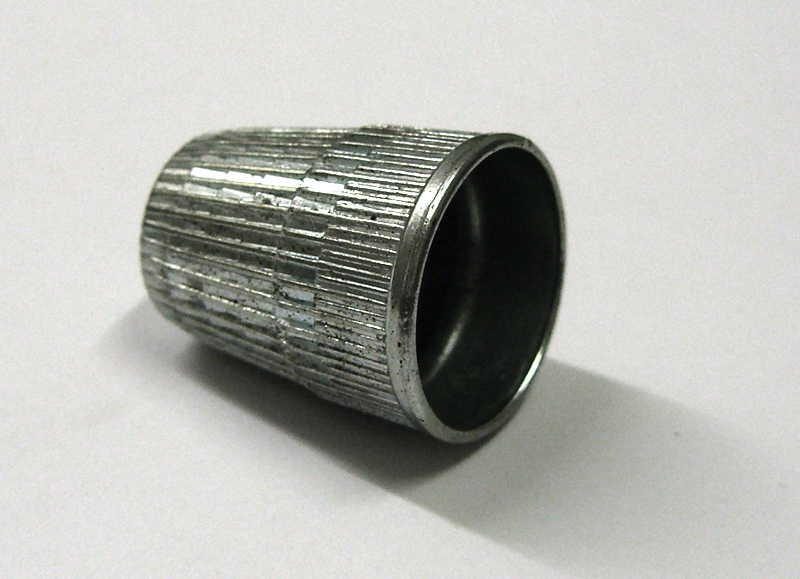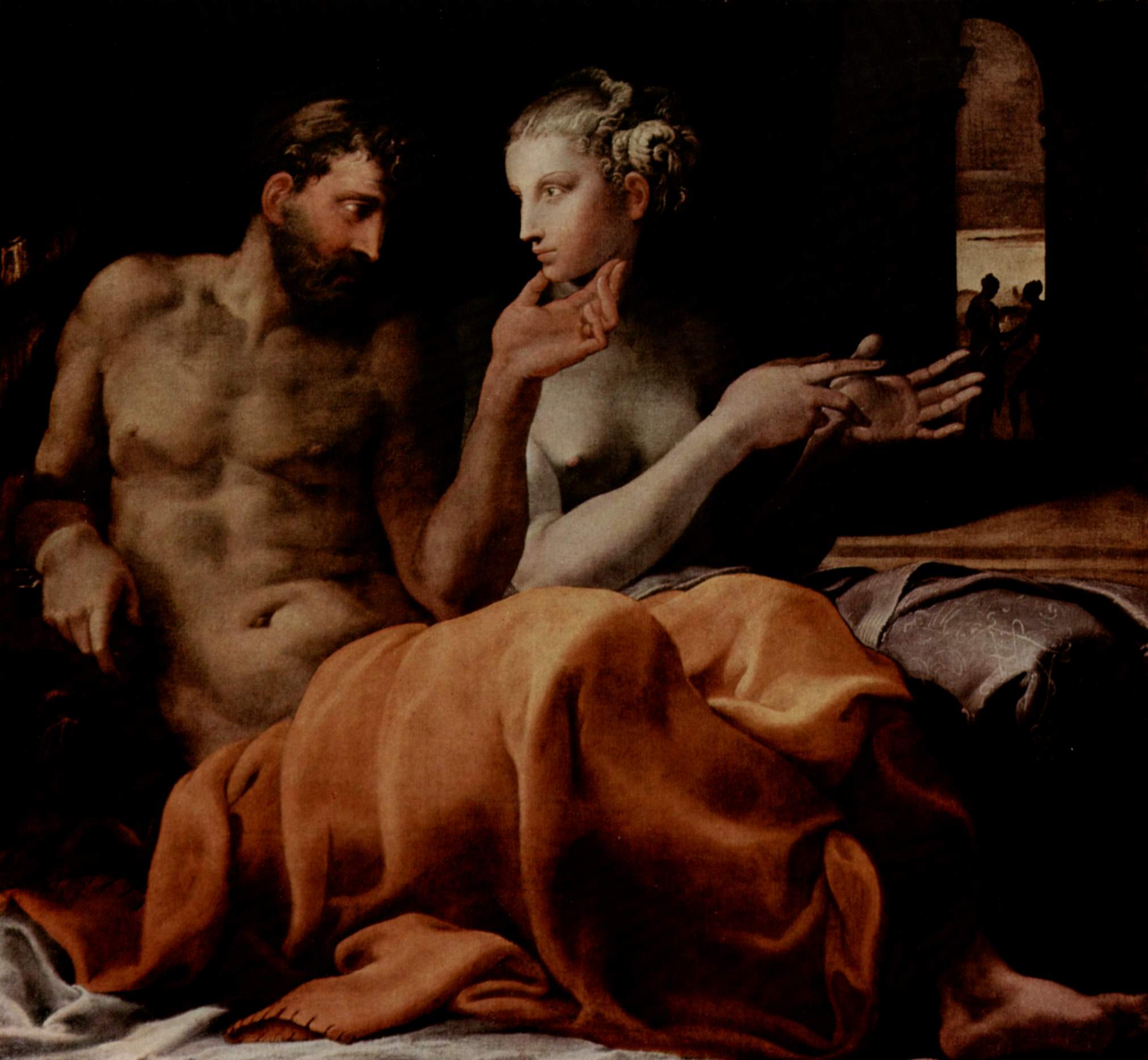|
Epinetron
The ''epinetron'' ( el, ἐπίνητρον, : ''epinetra'', ἐπίνητρα; "distaff"); Beazley also called them ''onoi'', : ''onos'') was a shape of Attic pottery worn on the thighs of women during the preparation of wool, not unlike a thimble for the thigh. Decorated ''epinetra'' were placed on the graves of unmarried girls, or dedicated at temples of female deities. Because of the strong association between wool-working and the ideal woman and wife—as in the case of Penelope weaving in the ''Odyssey''—it is a shape associated with the wedding A wedding is a ceremony where two people are united in marriage. Wedding traditions and customs vary greatly between cultures, ethnic groups, religions, countries, and social classes. Most wedding ceremonies involve an exchange of marriage vo .... Its decoration was not exclusively related to its own use, though it often was. Often the top surface was incised to make it rough in order to rub the wool fibers. There was often ... [...More Info...] [...Related Items...] OR: [Wikipedia] [Google] [Baidu] |
John Beazley
Sir John Davidson Beazley, (; 13 September 1885 – 6 May 1970) was a British classical archaeologist and art historian, known for his classification of Attic vases by artistic style. He was Professor of Classical Archaeology and Art at the University of Oxford from 1925 to 1956. Early life Beazley was born in Glasgow, Scotland on 13 September 1885, to Mark John Murray Beazley (died 1940) and Mary Catherine Beazley née Davidson (died 1918). He was educated at King Edward VI School, Southampton and Christ's Hospital, Sussex. He then attended Balliol College, Oxford where he read Literae Humaniores: he received firsts in both Mods and Greats. He graduated with a Bachelor of Arts (BA) degree in 1907. While at Oxford he became a close friend of the poet James Elroy Flecker. Academic career After graduating, Beazley spent time at the British School at Athens. He then returned to University of Oxford as a student (equivalent to fellow) and tutor in Classics at Christ Church. ... [...More Info...] [...Related Items...] OR: [Wikipedia] [Google] [Baidu] |
Attica
Attica ( el, Αττική, Ancient Greek ''Attikḗ'' or , or ), or the Attic Peninsula, is a historical region that encompasses the city of Athens, the capital of Greece and its countryside. It is a peninsula projecting into the Aegean Sea, bordering on Boeotia to the north and Megaris to the west. The southern tip of the peninsula, known as Laurion, was an important mining region. The history of Attica is tightly linked with that of Athens, and specifically the Golden Age of Athens during the classical period. Ancient Attica ( Athens city-state) was divided into demoi or municipalities from the reform of Cleisthenes in 508/7 BC, grouped into three zones: urban (''astu'') in the region of Athens main city and Piraeus (port of Athens), coastal (''paralia'') along the coastline and inland (''mesogeia'') in the interior. The modern administrative region of Attica is more extensive than the historical region and includes Megaris as part of the regional unit West Attica, ... [...More Info...] [...Related Items...] OR: [Wikipedia] [Google] [Baidu] |
Pottery
Pottery is the process and the products of forming vessels and other objects with clay and other ceramic materials, which are fired at high temperatures to give them a hard and durable form. Major types include earthenware, stoneware and porcelain. The place where such wares are made by a ''potter'' is also called a ''pottery'' (plural "potteries"). The definition of ''pottery'', used by the ASTM International, is "all fired ceramic wares that contain clay when formed, except technical, structural, and refractory products". In art history and archaeology, especially of ancient and prehistoric periods, "pottery" often means vessels only, and sculpted figurines of the same material are called "terracottas". Pottery is one of the oldest human inventions, originating before the Neolithic period, with ceramic objects like the Gravettian culture Venus of Dolní Věstonice figurine discovered in the Czech Republic dating back to 29,000–25,000 BC, and pottery vessels that were ... [...More Info...] [...Related Items...] OR: [Wikipedia] [Google] [Baidu] |
Thimble
A thimble is a small pitted cup worn on the finger that protects it from being pricked or poked by a needle while sewing. The Old English word , the ancestor of thimble, is derived from Old English , the ancestor of the English word ''thumb''. History Pre-17th century As the purpose of a thimble is to prevent discomfort while sewing by providing a barrier between fingertips and the blunt end of a needle, it is likely that the earliest thimbles were created closely following the invention of sewing. According to the United Kingdom Detector Finds Database, thimbles dating to the 10th century have been found in England, and thimbles were in widespread use there by the 14th century. Although there are isolated examples of thimbles made of precious metals—Elizabeth I is said to have given one of her ladies-in-waiting a thimble set with precious stones—the vast majority of metal thimbles were made of brass. Medieval thimbles were either cast brass or made from hammered sheet. ... [...More Info...] [...Related Items...] OR: [Wikipedia] [Google] [Baidu] |
Penelope
Penelope ( ; Ancient Greek: Πηνελόπεια, ''Pēnelópeia'', or el, Πηνελόπη, ''Pēnelópē'') is a character in Homer's ''Odyssey.'' She was the queen of Ithaca and was the daughter of Spartan king Icarius and naiad Periboea. Penelope is known for her fidelity to her husband Odysseus, despite the attention of more than a hundred suitors during his absence. In one source, Penelope's original name was Arnacia or Arnaea. Etymology Glossed by Hesychius as "some kind of bird" (today arbitrarily identified with the Eurasian wigeon, to which Linnaeus gave the binomial ''Anas penelope''), where () is a common Pre-Greek suffix for predatory animals; however, the semantic relation between the proper name and the gloss is not clear. In folk etymology, () is usually understood to combine the Greek word (), "weft", and (), "face", which is considered the most appropriate for a cunning weaver whose motivation is hard to decipher. Robert S. P. Beekes believed the name ... [...More Info...] [...Related Items...] OR: [Wikipedia] [Google] [Baidu] |
Odyssey
The ''Odyssey'' (; grc, Ὀδύσσεια, Odýsseia, ) is one of two major Ancient Greek literature, ancient Greek Epic poetry, epic poems attributed to Homer. It is one of the oldest extant works of literature still widely read by modern audiences. As with the ''Iliad'', the poem is divided into 24 books. It follows the Greek hero cult, Greek hero Odysseus, king of Homer's Ithaca, Ithaca, and his journey home after the Trojan War. After the war, which lasted ten years, his journey lasted for ten additional years, during which time he encountered many perils and all his crew mates were killed. In his absence, Odysseus was assumed dead, and his wife Penelope and son Telemachus had to contend with a Suitors of Penelope, group of unruly suitors who were competing for Penelope's hand in marriage. The ''Odyssey'' was originally composed in Homeric Greek in around the 8th or 7th century BCE and, by the mid-6th century BCE, had become part of the Greek literary canon. In Classic ... [...More Info...] [...Related Items...] OR: [Wikipedia] [Google] [Baidu] |
Wedding
A wedding is a ceremony where two people are united in marriage. Wedding traditions and customs vary greatly between cultures, ethnic groups, religions, countries, and social classes. Most wedding ceremonies involve an exchange of marriage vows by a couple, presentation of a gift (offering, rings, symbolic item, flowers, money, dress), and a public proclamation of marriage by an authority figure or Celebrant (Australia), celebrant. Special wedding garments are often worn, and the ceremony is sometimes followed by a wedding reception. Music, poetry, prayers, or readings from religious texts or literature are also commonly incorporated into the ceremony, as well as Wedding superstitions, superstitious customs. Common elements across cultures Some cultures have adopted the traditional Western custom of the white wedding, in which a bride wears a white wedding dress and veil. This tradition was popularized through the marriage of Queen Victoria. Some say Victoria's choice of ... [...More Info...] [...Related Items...] OR: [Wikipedia] [Google] [Baidu] |
Loutrophoros
A loutrophoros (Ancient Greek: λουτροφόρος; Greek etymology: λουτρόν/loutron and φέρω/pherō, English translation: "bathwater" and "carry") is a distinctive type of Greek pottery vessel characterized by an elongated neck with two handles. The loutrophoros was used to carry water for a bride's pre-nuptial ritual bath, and in funeral rituals, and was placed in the tombs of the unmarried.Richter, p. 57. The loutrophoros itself is a motif for Greek tombstones, either as a relief (for instance, the lekythos on the Stele of Panaetius) or as a stone vessel. There are many in the funeral area at the Kerameikos in Athens, some of which are now preserved in the National Archaeological Museum of Athens. File:Antikensammlung Kiel 367.JPG, Attic black-figure loutrophoros-hydria; late 6th century BC File:Antikensammlung Berlin 431.JPG, Attic black-figure loutrophoros-amphora with a prothesis scene, 510-500 BC File:0927 - Keramikos Museum, Athens - Loutrophoros from the ... [...More Info...] [...Related Items...] OR: [Wikipedia] [Google] [Baidu] |
World History Encyclopedia
World History Encyclopedia (formerly Ancient History Encyclopedia) is a nonprofit educational company created in 2009 by Jan van der Crabben. The organization publishes and maintains articles, images, videos, podcasts, and interactive educational tools related to history. All users may contribute content to the site, although submissions are reviewed by an editorial team before publication. In 2021, the organization was renamed from the Ancient History Encyclopedia to World History Encyclopedia to reflect its broadened scope, covering world history from all time periods, as opposed to just ancient history. Original articles are written in English and later translated into other languages, mainly French and Spanish. Organization history The Ancient History Encyclopedia was founded in 2009 by van der Crabben with the stated goal of improving history education worldwide by creating a freely accessible and reliable history source. The nonprofit organization is based in Godalming, Unit ... [...More Info...] [...Related Items...] OR: [Wikipedia] [Google] [Baidu] |





